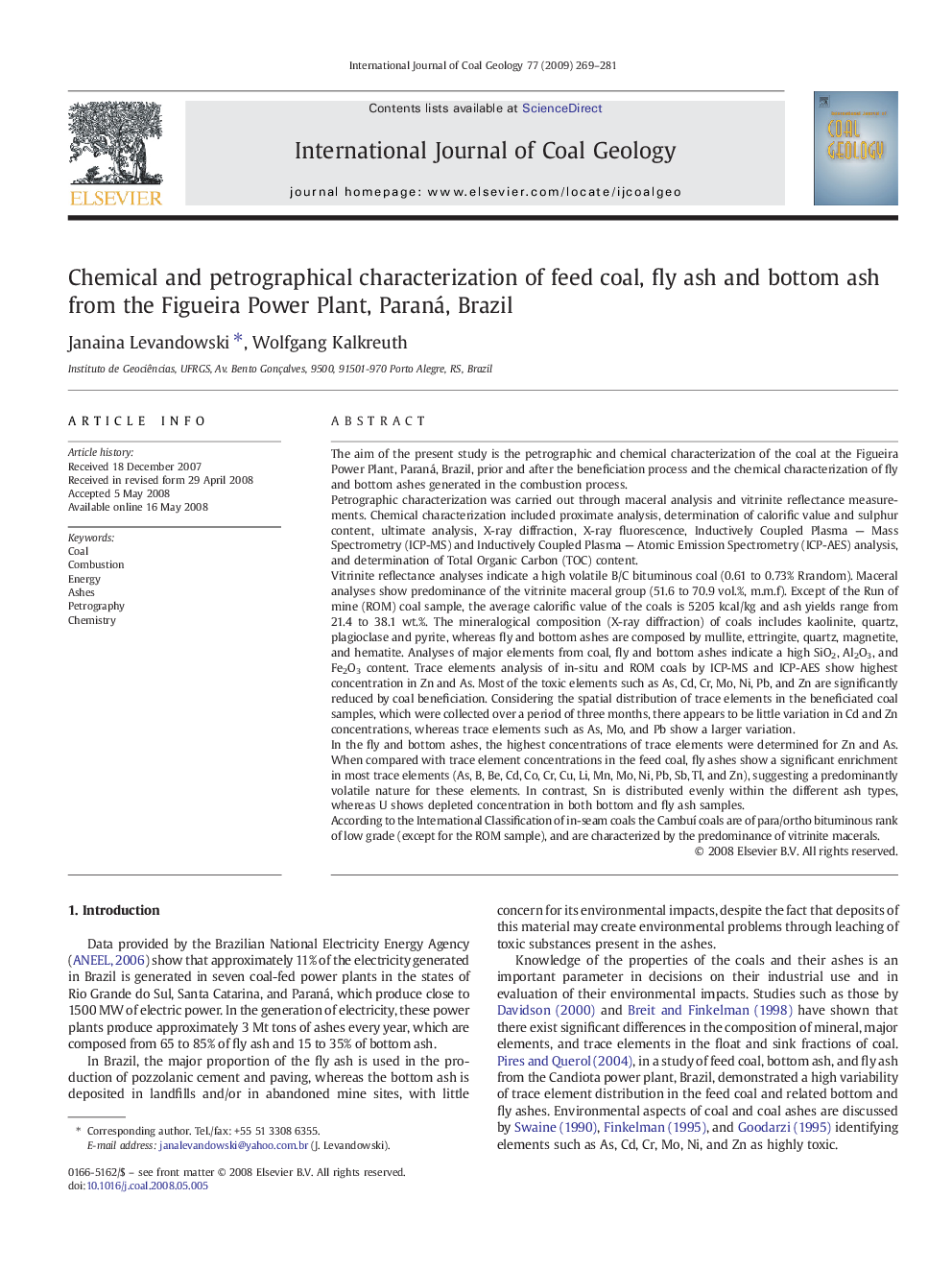| کد مقاله | کد نشریه | سال انتشار | مقاله انگلیسی | نسخه تمام متن |
|---|---|---|---|---|
| 1754087 | 1522638 | 2009 | 13 صفحه PDF | دانلود رایگان |

The aim of the present study is the petrographic and chemical characterization of the coal at the Figueira Power Plant, Paraná, Brazil, prior and after the beneficiation process and the chemical characterization of fly and bottom ashes generated in the combustion process.Petrographic characterization was carried out through maceral analysis and vitrinite reflectance measurements. Chemical characterization included proximate analysis, determination of calorific value and sulphur content, ultimate analysis, X-ray diffraction, X-ray fluorescence, Inductively Coupled Plasma — Mass Spectrometry (ICP-MS) and Inductively Coupled Plasma — Atomic Emission Spectrometry (ICP-AES) analysis, and determination of Total Organic Carbon (TOC) content.Vitrinite reflectance analyses indicate a high volatile B/C bituminous coal (0.61 to 0.73% Rrandom). Maceral analyses show predominance of the vitrinite maceral group (51.6 to 70.9 vol.%, m.m.f). Except of the Run of mine (ROM) coal sample, the average calorific value of the coals is 5205 kcal/kg and ash yields range from 21.4 to 38.1 wt.%. The mineralogical composition (X-ray diffraction) of coals includes kaolinite, quartz, plagioclase and pyrite, whereas fly and bottom ashes are composed by mullite, ettringite, quartz, magnetite, and hematite. Analyses of major elements from coal, fly and bottom ashes indicate a high SiO2, Al2O3, and Fe2O3 content. Trace elements analysis of in-situ and ROM coals by ICP-MS and ICP-AES show highest concentration in Zn and As. Most of the toxic elements such as As, Cd, Cr, Mo, Ni, Pb, and Zn are significantly reduced by coal beneficiation. Considering the spatial distribution of trace elements in the beneficiated coal samples, which were collected over a period of three months, there appears to be little variation in Cd and Zn concentrations, whereas trace elements such as As, Mo, and Pb show a larger variation.In the fly and bottom ashes, the highest concentrations of trace elements were determined for Zn and As. When compared with trace element concentrations in the feed coal, fly ashes show a significant enrichment in most trace elements (As, B, Be, Cd, Co, Cr, Cu, Li, Mn, Mo, Ni, Pb, Sb, Tl, and Zn), suggesting a predominantly volatile nature for these elements. In contrast, Sn is distributed evenly within the different ash types, whereas U shows depleted concentration in both bottom and fly ash samples.According to the International Classification of in-seam coals the Cambuí coals are of para/ortho bituminous rank of low grade (except for the ROM sample), and are characterized by the predominance of vitrinite macerals.
Journal: International Journal of Coal Geology - Volume 77, Issues 3–4, 31 January 2009, Pages 269–281